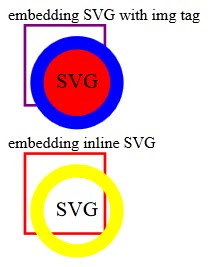The challenge here is how to use a key (built from matching orderlines) in the context of processing the stock. It might sound trivial but I leave it up to yourself to find out it's actually not.
stock.xml
<?xml version="1.0" encoding="UTF-8" ?>
<stock>
<item id="PH3330L">
<quantity>10</quantity>
</item>
<item id="BAS16">
<quantity>7</quantity>
</item>
<item id="BUK100-50DL">
<quantity>14</quantity>
</item>
</stock>
orderlines.xml
<?xml version="1.0" encoding="UTF-8" ?>
<orderlines>
<orderline itemId="PH3330L">
<quantity>4</quantity>
</orderline>
<orderline itemId="BAS16">
<quantity>2</quantity>
</orderline>
</orderlines>
newstock.xml (expected output)
<?xml version="1.0" encoding="UTF-8"?>
<stock>
<item id="PH3330L">
<quantity>6</quantity>
</item>
<item id="BAS16">
<quantity>5</quantity>
</item>
<item id="BUK100-50DL">
<quantity>14</quantity>
</item>
</stock>
processOrderlines.xslt
<?xml version="1.0" encoding="UTF-8"?>
<!--
Author: Robby Pelssers
-->
<xsl:stylesheet version="2.0"
xmlns:xsl="http://www.w3.org/1999/XSL/Transform"
xmlns:xs="http://www.w3.org/2001/XMLSchema"
xmlns:pelssers="http://robbypelssers.blogspot.com"
exclude-result-prefixes="pelssers xs">
<xsl:output method="xml" version="1.0" encoding="UTF-8"/>
<xsl:param name="orderlinesURI" />
<xsl:variable name="orderlines" select="document($orderlinesURI)/orderlines"/>
<xsl:key name="orderline-lookup" match="orderline" use="@itemId"/>
<xsl:template match="/">
<xsl:apply-templates/>
</xsl:template>
<xsl:function name="pelssers:newQuantity" as="xs:double">
<xsl:param name="element" as="element(orderlines)"/>
<xsl:param name="itemId" as="xs:string"/>
<xsl:param name="stockQuantity" as="xs:double"/>
<xsl:apply-templates select="$element">
<xsl:with-param name="itemId" select="$itemId"/>
<xsl:with-param name="stockQuantity" select="$stockQuantity"/>
</xsl:apply-templates>
</xsl:function>
<xsl:template match="orderlines" as="xs:double">
<xsl:param name="itemId" as="xs:string"/>
<xsl:param name="stockQuantity" as="xs:double"/>
<xsl:sequence select="if (exists(key('orderline-lookup', $itemId)))
then $stockQuantity - key('orderline-lookup', $itemId)/quantity else $stockQuantity"/>
</xsl:template>
<xsl:template match="stock/item/quantity">
<quantity><xsl:sequence select="pelssers:newQuantity($orderlines, parent::item/@id, .)"/></quantity>
</xsl:template>
<xsl:template match="@*|node()">
<xsl:copy>
<xsl:apply-templates select="@*"/>
<xsl:apply-templates/>
</xsl:copy>
</xsl:template>
</xsl:stylesheet>
For this demo I only used the saxon jar from the command line.
java -Xmx1024m -jar Saxon-HE-9.4.jar -s:C:/tmp/keydemo/input/stock.xml -o:C:/tmp/keydemo/output/newstock.xml -xsl:C:/tmp/keydemo/xslt/processOrderlines.xslt orderlinesURI=file:/C:/tmp/keydemo/input/orderlines.xml
Below a simplified stylesheet using a 3rd parameter to set the context node. It's based on a tip from @grtjn.
<?xml version="1.0" encoding="UTF-8"?>
<!--
Author: Robby Pelssers
-->
<xsl:stylesheet version="2.0"
xmlns:xsl="http://www.w3.org/1999/XSL/Transform"
xmlns:xs="http://www.w3.org/2001/XMLSchema"
xmlns:pelssers="http://robbypelssers.blogspot.com"
exclude-result-prefixes="pelssers xs">
<xsl:output method="xml" version="1.0" encoding="UTF-8"/>
<xsl:param name="orderlinesURI" />
<xsl:variable name="orderlines" select="document($orderlinesURI)/orderlines"/>
<xsl:key name="orderline-lookup" match="orderline" use="@itemId"/>
<xsl:template match="/">
<xsl:apply-templates/>
</xsl:template>
<xsl:template match="stock/item/quantity">
<xsl:variable name="orderline" select="key('orderline-lookup', parent::item/@id, $orderlines)"/>
<quantity><xsl:sequence select="if (exists($orderline)) then . - $orderline/quantity else xs:double(.)"/></quantity>
</xsl:template>
<xsl:template match="@*|node()">
<xsl:copy>
<xsl:apply-templates select="@*"/>
<xsl:apply-templates/>
</xsl:copy>
</xsl:template>
</xsl:stylesheet>
